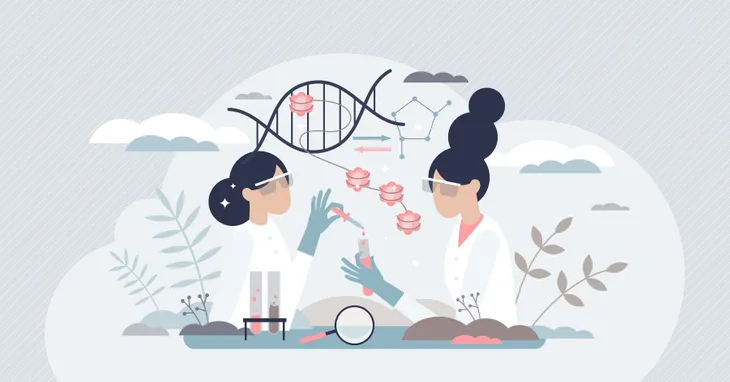Your gastrointestinal tract (GI) has a lot of responsibility, from regulating digestion to even playing a role in your immunity. Gastrointestinal stromal tumors (GISTs) are soft tissue tumors that begin in autonomic nervous system cells in your GI, and they can be cancerous, explains Healthline.
The tumors or “clusters of overgrown cells” can be found anywhere in the GI tract, which includes everything from the esophagus to the stomach to the colon, notes the source. However, most often GISTs are found in the stomach. Let’s take a closer look at the signs you might be experiencing a GIST, and what to do about it…
What Are the Symptoms of Gists?
As Healthline explains, the type of symptoms you might be experiencing will depend on the size and location of the tumor in the GI. “Because of this, they often vary in severity and from one person to another,” explains the source.
However, some of the telltale signs you should consult a doctor include bloody stools, pain/discomfort in the abdomen, fatigue, getting full easily, or even pain when swallowing. The source also points out you should let a doctor sort it out, as some of the symptoms (including possible nausea, or vomiting blood) overlap with others.
How Is a GIST Diagnosed?
During your doctor’s appointment, they will likely ask you about your medical history, as well as check for any growth in your abdomen, explains the Mayo Clinic.
If the doctor suspects a GIST might be present, they will move to the next steps that include imaging or scopes. Let’s take a look at these next.
Tests Used to Diagnose GIST
These tests can include computed tomography (CT) scans to pinpoint the position of a tumor, as well as an endoscopic ultrasound that uses sound waves to give a clearer picture of what’s going on inside.
You may also need an upper endoscopy (a lit tube down the throat while sedated). Your doctor may also require a fine-needle biopsy to get a tissue sample from the tumor. The sample is then sent to a lab for a definite diagnosis.
Staging
After being diagnosed with cancer, your doctor will then determine if cancer has spread. This process is called staging. The stage of cancer helps describe how much cancer is in your body, how serious it is, and how best to treat it.
“The stages for gastrointestinal stromal tumors (GIST) range from I (1) through IV (4),” Says the American Cancer Society. Essentially, if the stage is low, it means the cancer hasn’t advanced too far. But, the higher the number, the more cancer has spread.
Not All GISTs Are Cancerous
When you hear the word “tumor,” you may automatically conclude it’s cancerous (malignant). However, the Canadian Cancer Society points out that GISTs can also be benign, meaning they are not diseased.
The source notes that non-cancerous GISTs (usually under 3/4-inches in size) can grow but will not spread to other parts of the body, and are most often not life-threatening. However, the source also warns that GISTs that are cancerous can destroy nearby tissues and even reach distant organs.
Risk Factors: Age
The American Cancer Society notes there are a number of risk factors for developing GISTs. For example, age is a big one – while the source notes GISTs can occur in patients of any age, it adds they are rare in people under 40 (and most common over age 50).
Unfortunately, experts don’t know of any ways to protect against these types of cancer. “There are no known lifestyle-related or environmental causes of GISTs,” says the source.
Risk Factors: Genetics
While there can be some genetic factors (that we’ll get to next), the source explains that most GISTs are “sporadic” and have no “clear cause.”
In other cases, the disease can be the result of a gene mutation that runs in families. One of them is called Primary familial GIST syndrome, and in this case, the patient may develop a GIST at an earlier age, it notes.
There Can Be Other Genetic Causes
Cancer.gov reinforces that inherited genes can put you at more risk for developing a GIST. (In some cases, GISTs can affect several people in the same family). But while an inherited mutation in a certain gene can increase your chances of developing the disease, it doesn’t mean you’re going to.
The source also explains other genetic syndromes can be factors for developing GISTs – but rarely. More specifically, it says that Neurofibromatosis type 1 (that can cause brown spots on the skin) and Carney triad (most commonly affecting young females) are two genetic syndromes that have been linked to GI tumors.
Treatment Depends on Diagnostic Results
Cancer.gov explains there are generally 4-approaches taken to address GISTs. They include surgery, targeted therapy, “watchful waiting”, and supportive care. Surgery is an option to remove the tumor if the GIST has not spread, explains the source. Targeted therapy, as the name suggests, involves using specific drugs to target specific cancer cells.
The “watchful waiting” strategy delays treatment until symptoms start to appear or change (some GISTs can be very small or have no symptoms), while supportive care aims to mitigate the main symptoms and side effects from treatment. As part of this approach, radiation therapy may be used to help relieve pain in patients with large tumors that have spread.
You May Need Continuing Care
Even following successful treatment, GISTs can come back in some cases, notes the American Cancer Society. For this reason, it says, you should try to attend all follow-up appointments ordered by your medical team.
“For some people, the GIST may never go away completely,” the source adds. In these cases, you might need ongoing targeted drug therapy or other methods to help manage the cancer. Meanwhile, it also warns that treatment’s side effects may take years to show up, so it’s important to report any issues afterward. Having someone close for ongoing emotional support (including support groups) is also helpful.
How Can I Prevent a GIST From Returning?
More accurately, you might be able to lower your risk of a GIST recurring – but there’s no guarantee, notes the American Cancer Society. “Unfortunately, it’s not yet clear if there are things you can do that will help,” the source explains. However, it says that staying active, eating a healthy diet, and managing weight can all be positives overall.
While vitamins or dietary supplements may have been touted to help prevent a recurrence, the source says so far there’s no solid proof that they’re effective for this purpose. It points out that dietary supplements do not have to be proven to be effective in the U.S. to make certain claims, so be wary.
What Is the Long-Term Outlook for GIST Patients?
There is survival rate data for GIST patients available based on information posted by the American Cancer Society. (However, Healthline points out that this information is collected from cases between 2010 to 2016, and that GIST treatment has improved since. There are also clinical trials available for possible new treatments).
The encouraging news is that the 5-year survival rate available for localized cases (limited to one organ) is 93-percent, notes the American Cancer Society. For regional patients (cancer has spread to other organs or lymph nodes), that number is 80-percent. There are also “distant” cases, which means the cancer has spread to faraway organs such as the liver. The 5-year survival rate in this situation is 55-percent, the source adds.















